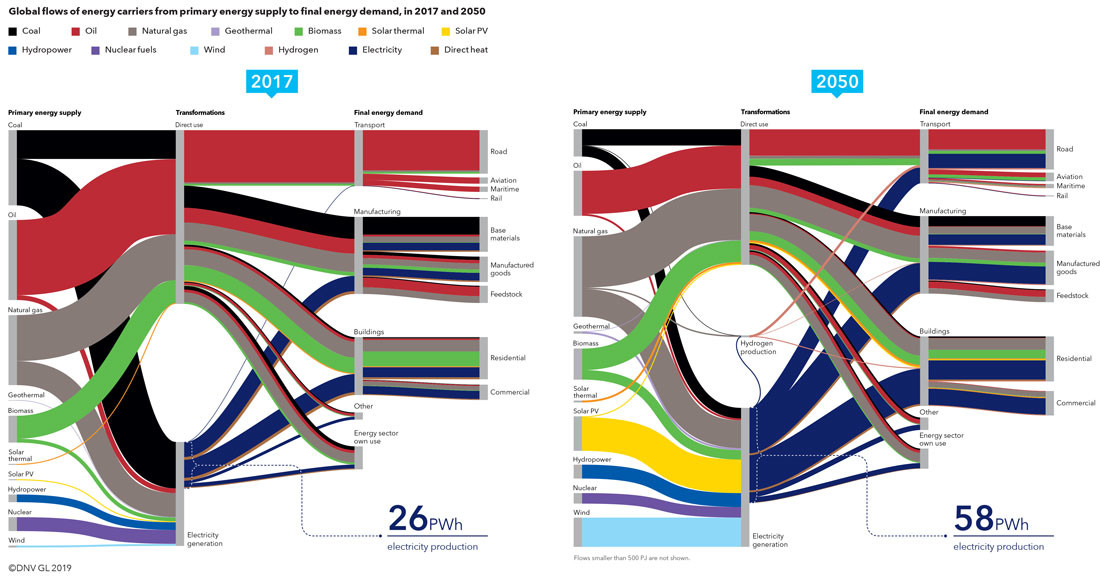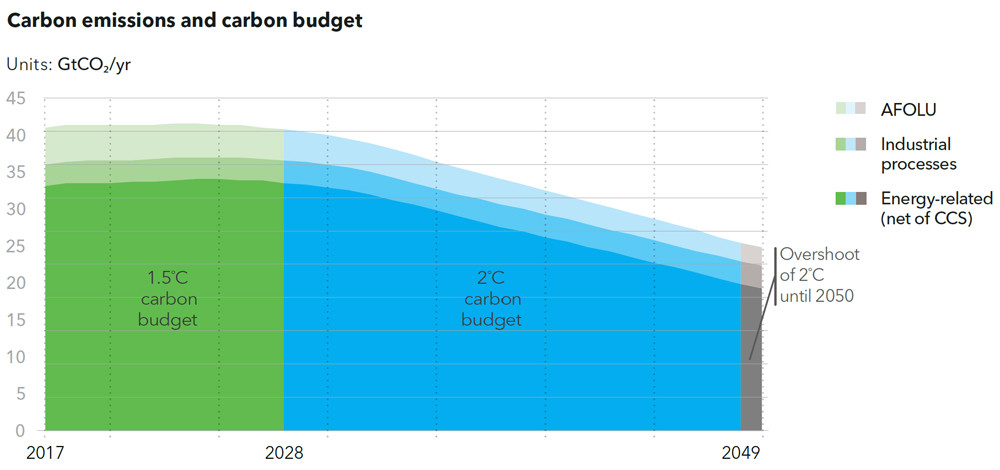The transition of the global energy market is underway, but not fast enough to meet the climate targets – the energy forecast 2050 of our electromobility partner DNV GL is now available (find download link at the end of article).
Let’s start with some good news from the global and regional energy forecast to 2050
A population growth of 25 % to 9,4 billion people and a GDP growth of 130 %, but only an increase of 6 % in primary energy demand. This means per person GDP growth from 17 000 to 31 000 USD compared to a reduction in energy demand from 78 to 62 GJ/person over the same period of time. There is not only a transition of our energy market from fossil to renewable energies. Moreover, the electrification of transport and digitization will make the energy system more efficient.

Source: Global Flows of Energy Carriers 2050 (primary supply to final demand), DNV GL, 2019
Let’s continue with further figures on primary energy demand and the global energy mix
Primary energy demand will peak in 2033, and then fall. By 2050, the share of electricity will double (mainly because of the electrification of transport). Renewable energy will be the main driver of electrification, together with other non-fossil sources such as nuclear as they will account for 44 % of the global energy mix in 2050 (58 % in Europe, the frontrunner of this global transition).
Fossils such as coal and oil will decline, but natural gas will still account for 29 % of the primary mix. Of all fossil fuels, natural gas remains the most environmentally friendly and will be needed in the future, e.g. in the electricity market, to compensate for the increased volatility of PV and wind, but also in buildings and manufacturing.
And now to the more unpleasant facts, it will be hard to reach our climate goals
Energy-related emissions will fall, but not enough to meet the 'Paris Agreement 2015' target of "holding the increase in the global average temperature to well-below 2°C above pre-industrial levels" by 2050.
DNV GL concludes: "Hence strengthening of commitments and actions is urgently needed for any chance of reaching a well-below 2 °C target." In other words, there are ways, but they must be politically desired and financed. The cost for CO2 capture and storage will decrease by 50%, but its use still depends on CO2 prices and political will.

Source: Carbon emissions and carbon budget, DNV GL, 2019
Every strategic decision and every future business model requires figures
The study and forecast was conducted by more than 100 DNV GL experts from various business areas and supported by some 40 external collaborations. The overall outlook provides detailed calculations for ten world regions, different demand sectors and different primary and secondary energy sources. In the example for the electricity market, the calculation model is based on hourly prices depending on different supply and demand curves.
We would like to thank our electromobility partner DNV GL for this powerful 'Energy Transition Outlook 2019'. Every strategic decision or business model requires figures and assumptions, which are summarized here in a comprehensive model.
Download the 300-pages report 'Energy Transition Outlook 2019 - A global and regional forecast to 2050' free of charge on our partner’s website.
Published by Welf Wiemer, accilium